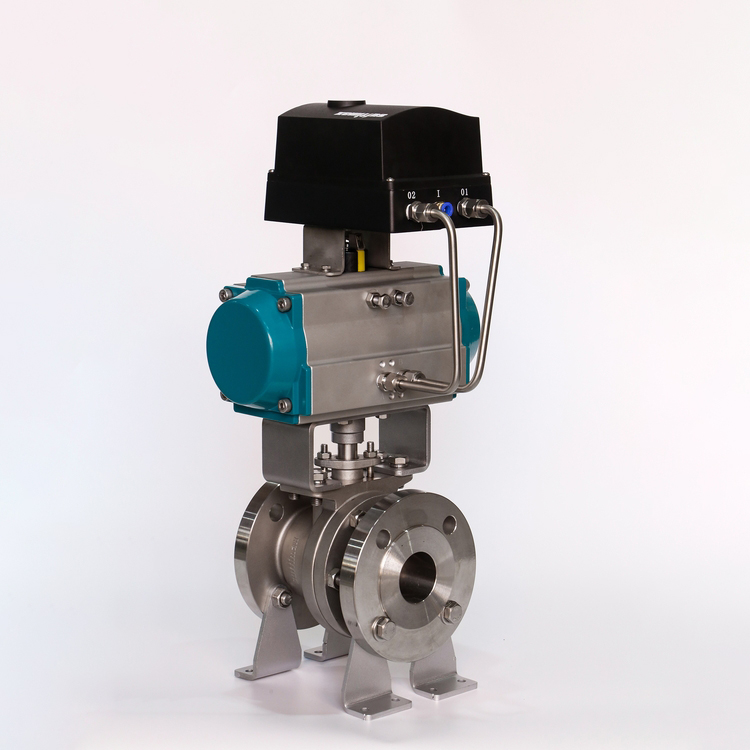Gaining Control: Comprehending Air-powered Controllers with Manual Control
In the world of automated systems and control systems, pneumatic actuators play a essential role in driving machinery and processes. These devices utilize compressed air to produce mechanical movement, making them effective for various applications. One of the key features that enhances the flexibility and safety of pneumatic actuators is the manual override capability. pneumatic actuator with manual override allows operators to take action manually in case of emergencies or system failures, ensuring that key operations can continue seamlessly.
Understanding pneumatic actuators with manual override is essential for industries that rely on precise control and automation. By incorporating a manual override, operators gain an extra layer of control, enabling them to swiftly react to unforeseen circumstances. Whether in manufacturing, robotics, or processes in dangerous settings, this two-in-one capability guarantees both performance and safety, highlighting the importance of these innovative devices in modern engineering and industry solutions.
Overview of Air Actuators

Pneumatic cylinders are mechanical devices that convert compressed air into motion. They are commonly used in manufacturing applications to mechanize processes such as the operation of gates, dampers, and various machinery. By leveraging the force derived from compressed air, these cylinders provide a dependable means of performing linear or rotary activity with efficiency and accuracy. Their role in various systems, including production, food processing, and aerospace, makes them essential to modern industrial processes.
The operation of a pneumatic actuator typically involves the use of an air supply linked to a cylinder. As pressurized air enters the cylinder, it pushes against a piston, generating force that moves the actuator's output shaft or rod. Based on the design, this motion can be linear, allowing straightforward push or pull actions, or rotary, transmitting torque to drive devices. The ease of their design and the comparatively low cost of pneumatic components contribute to their widespread use.
What sets pneumatic actuators with manual override apart is the ability to manually control the actuator in case of equipment malfunction or emergency situations. This feature ensures that operators can maintain control, permitting for safe functioning even when the automated system encounters challenges. The combination of automatic functions and manual capability enhances the flexibility and reliability of pneumatic cylinders in critical applications, ensuring that processes can continue smoothly under varying conditions.
Significance of Manual Override
The hand-operated feature of pneumatic actuators is vital for guaranteeing flexibility in operations and safety in multiple applications. In cases where automated systems may break down or become unresponsive due to power failure or mechanical failures, having a manual option allows operators to restore control rapidly. This ability to intervene manually is crucial in sustaining the flow of procedures, especially in environments where time-critical operations are necessary.
Another significant aspect of manual override is the improvement of safety procedures. In hazardous environments, such as chemical facilities, automatic systems can pose risks if they break down. The manual override serves as a fail-safe, enabling personnel to halt operations or modify settings without depending entirely on automation. This feature not just protect equipment but also promotes the safety of workers by allowing them to take immediate action in emergencies.
Finally, manual override contributes to the simplicity of maintenance and troubleshooting. When servicing pneumatic actuators, technicians can use the manual control feature to examine and diagnose issues without having to wait for the entire system to be operational. This capability can lead to less downtime and faster recovery from any failures. Overall, the inclusion of manual overrides into pneumatic actuators enhances their reliability and user confidence in automated systems.
Applications and Use Cases
Pneumatic actuators with manual override are commonly used in diverse industries where both automatic control and manual control are essential. One key use is in the production industry, where these actuators facilitate tasks such as material handling and assembly processes. In scenarios where machinery may need to be halted or modified quickly, the manual override feature allows technicians to take action and make immediate adjustments, ensuring smooth operations and security.
Another important application is found in the car manufacturing sector, particularly in assembly lines where precise movements are crucial. Pneumatic actuators aid in processes like clamping, aligning, and raising components. The manual override provides mechanics with the ability to override automatic controls during service or diagnostic efforts, allowing for smooth operations without jeopardizing safety protocols.
Additionally, pneumatic actuators with manual override are often used in wastewater treatment plants and HVAC systems. In these environments, they play a essential role in managing valves and airflow controls. The manual override feature is essential during emergencies or maintenance, enabling workers to manually control processes when automated systems malfunction or require adjustments, ultimately ensuring the continued functionality of essential services.